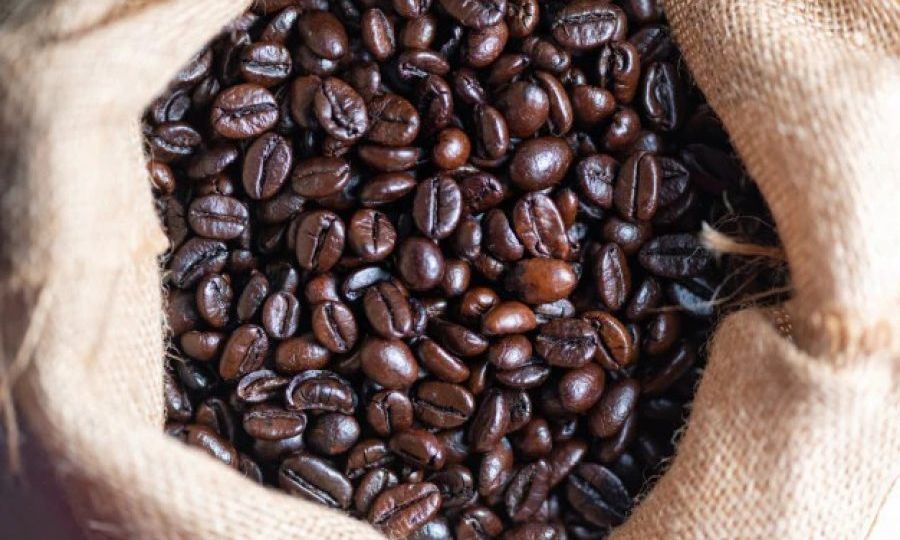
The allure of a perfect cup of coffee often overlooks a crucial aspect—oily coffee beans and their impact on the coffee experience. Oily beans, while natural to some extent, can affect the flavor, aroma, and overall quality of coffee. Understanding the factors contributing to oiliness and how to manage them is essential for both connoisseurs and casual drinkers aiming for that impeccable brew.
What Causes Coffee Beans to Become Oily?
The journey of a coffee bean from a green, unassuming seed to a rich, aromatic delight is primarily through the roasting process. It is this process that significantly influences the oiliness of the beans. As beans are roasted, the heat causes the natural oils inside to move to the surface. Dark roasting intensifies this effect, resulting in beans with a noticeable oily sheen.
This phenomenon is less pronounced or absent in lighter roasts, making the roast level a primary determinant of the bean’s surface oiliness.
Implications of Oily Beans for Coffee Quality
The presence of oil on coffee beans is a double-edged sword. On one hand, these oils are carriers of the coffee’s flavor and aroma, contributing to a richer sensory experience. On the other hand, excessive oiliness can lead to rapid degradation of the beans. When exposed to air, the oils can oxidize, leading to rancidity.
This not only diminishes the freshness of the beans but can also impart an unpleasant taste to the coffee. Managing the oiliness of coffee beans is thus crucial to preserving their quality and ensuring a consistently enjoyable cup of coffee.
Roast Levels and Oiliness
The appearance of oils on the surface of coffee beans is closely linked to their roast level. Darker roasts tend to produce more oils on the bean’s surface due to the longer and hotter roasting process. These oils, while contributing to the coffee’s flavor profile, can be a concern for those looking to manage oiliness. To minimize oiliness, consider selecting medium or light roast beans.
These roasts typically have less visible oil, offering a cleaner cup with a brighter acidity and preserving the beans’ original flavors.
Understanding Coffee Bean Packaging
The right packaging plays a crucial role in preserving the quality of coffee beans, particularly in slowing down the oxidation of oils. Packages with one-way valves are ideal as they allow the release of carbon dioxide while preventing air (and thus oxygen) from entering.
Additionally, opting for opaque, UV-resistant packaging can protect the beans from light, which can accelerate the oxidation process, ensuring that the beans stay fresher for longer.
Proper Storage Solutions
Storing coffee beans in airtight containers in a cool, dark environment is key to preserving their quality and minimizing oiliness. Exposure to air and light accelerates oil oxidation, leading to potential rancidity. For beans already showing signs of oiliness, reducing their exposure to these elements can slow down further oil migration to the surface.
Coffee Bean Handling and Preparation
Reducing the appearance of oil on coffee beans before use can enhance your coffee experience. Techniques such as lightly patting the beans with paper towels or using salt to absorb surface oil can be effective. When preparing oily beans, consider grinding them coarsely and opting for brewing methods that can handle or even benefit from the oiliness, such as French press or espresso, to enjoy a rich and flavorful cup.
Cleaning and Maintaining Coffee Grinders and Machines
To ensure the longevity of coffee equipment and the quality of your brew, regular cleaning to remove oily residues is essential. For coffee grinders, use a brush or a grinder cleaning pellet to remove oil buildup. Coffee machines benefit from a descaling solution run through the system, followed by several water-only cycles.
Establishing a routine for cleaning after a set number of uses prevents the accumulation of oils that can degrade equipment performance and coffee flavor.
Troubleshooting Common Issues with Oily Coffee Beans
Adjusting grinder settings to a coarser grind can help manage the challenges posed by oily beans, preventing clogs and ensuring a consistent grind. For brewing, consider methods less susceptible to issues from oiliness, such as French press or espresso, which can accommodate the rich flavors that oily beans offer.
FAQs
- How can I identify oily coffee beans? Oily beans exhibit a noticeable sheen on their surface, often more pronounced in darker roasts.
- Do oily coffee beans impact health? While the oils in coffee beans carry flavors and antioxidants, consuming them in moderation is advisable as part of a balanced diet.
- What are alternatives for avoiding oiliness? Opting for medium or light roasts and ensuring proper storage and preparation can minimize oiliness.
Conclusion
Understanding and managing oily coffee beans is crucial for anyone looking to enhance their coffee experience. By selecting the appropriate roast levels, employing proper storage and handling techniques, and maintaining equipment, coffee enthusiasts can mitigate the challenges associated with oiliness.
Experimentation with different beans, storage methods, and brewing techniques is encouraged, allowing individuals to discover the perfect combination that suits their taste preferences and equipment capabilities.









